Planting a tart cherry tree is an exciting start to creating a productive backyard orchard. But planting alone isn’t enough—proper pruning, especially in the first year, is critical for establishing a strong structure, encouraging healthy root and branch development, and setting the stage for future fruit production.
Inspired by the video “Pruning a Newly Planted Tart Cherry Tree,” this guide will cover everything you need to know about pruning tart cherry trees, including timing, techniques, tools, and long-term care strategies to ensure your tree thrives for years to come.
Why Pruning a Newly Planted Tart Cherry Tree Matters
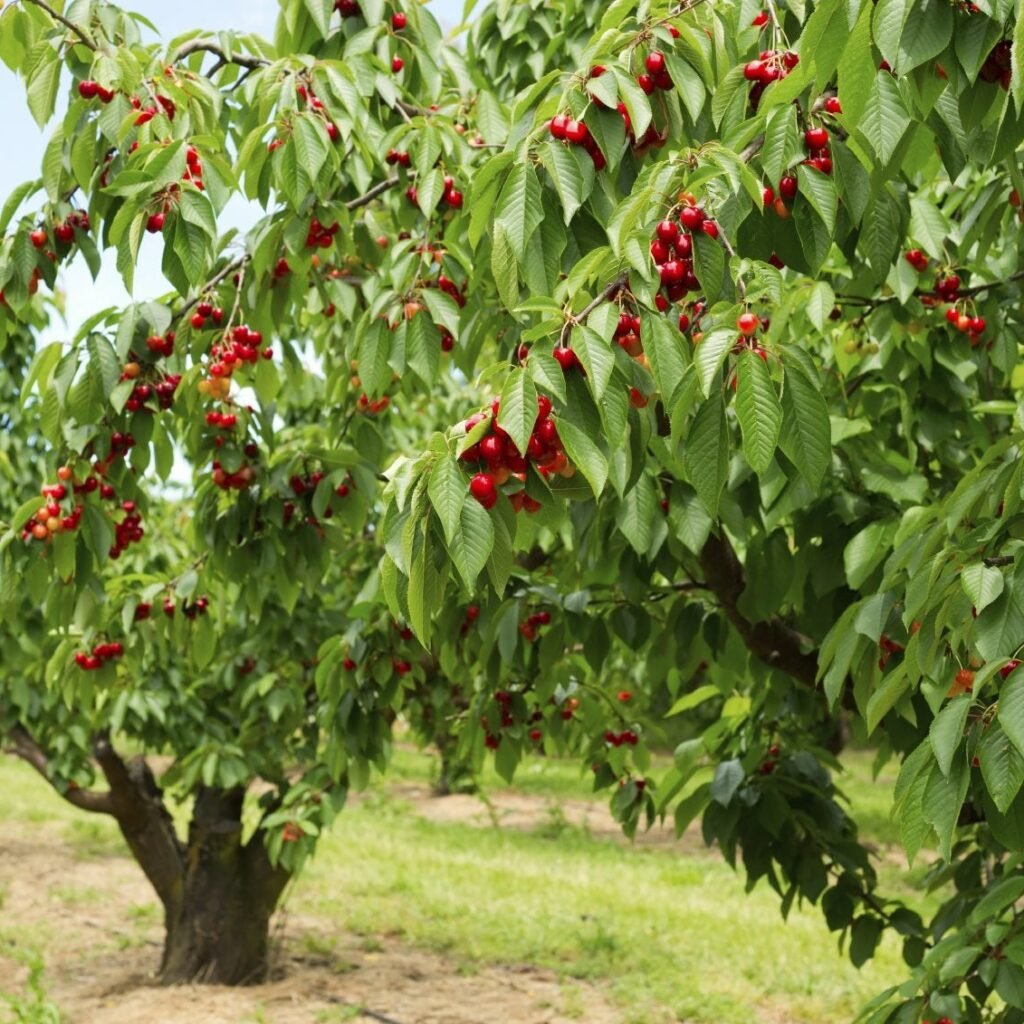
Pruning a young tart cherry tree is essential for several reasons:
- Encourages Strong Structure: Establishing a central leader and well-spaced branches ensures the tree grows into a sturdy framework capable of supporting heavy fruit loads.
- Promotes Fruit Production: Correct early pruning stimulates lateral growth and improves sunlight penetration, essential for flowering and fruiting.
- Prevents Future Problems: Removing damaged or weak branches early reduces the risk of disease, pest infestations, and structural issues later.
- Balances Root and Shoot Growth: Pruning moderates top growth, allowing the roots to establish without excessive competition for resources.
By focusing on structural pruning in the first year, you save time and effort in future maintenance while maximizing the tree’s long-term productivity.
Step 1: Timing Your First Pruning
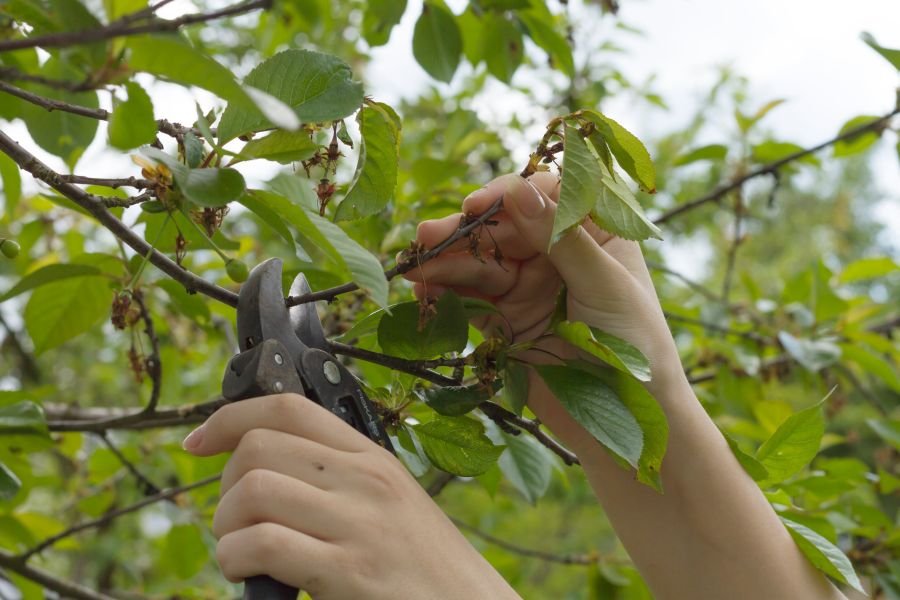
The ideal time to prune a newly planted tart cherry tree is during late winter or early spring while the tree is still dormant. Dormancy ensures that:
- The tree experiences less stress during pruning.
- Wounds heal quickly before the growing season.
- Pests and diseases are less active, reducing the risk of infection.
Avoid pruning in late summer or fall, as new growth stimulated by pruning may not harden off before winter, making it vulnerable to cold damage.
Step 2: Preparing Your Tools
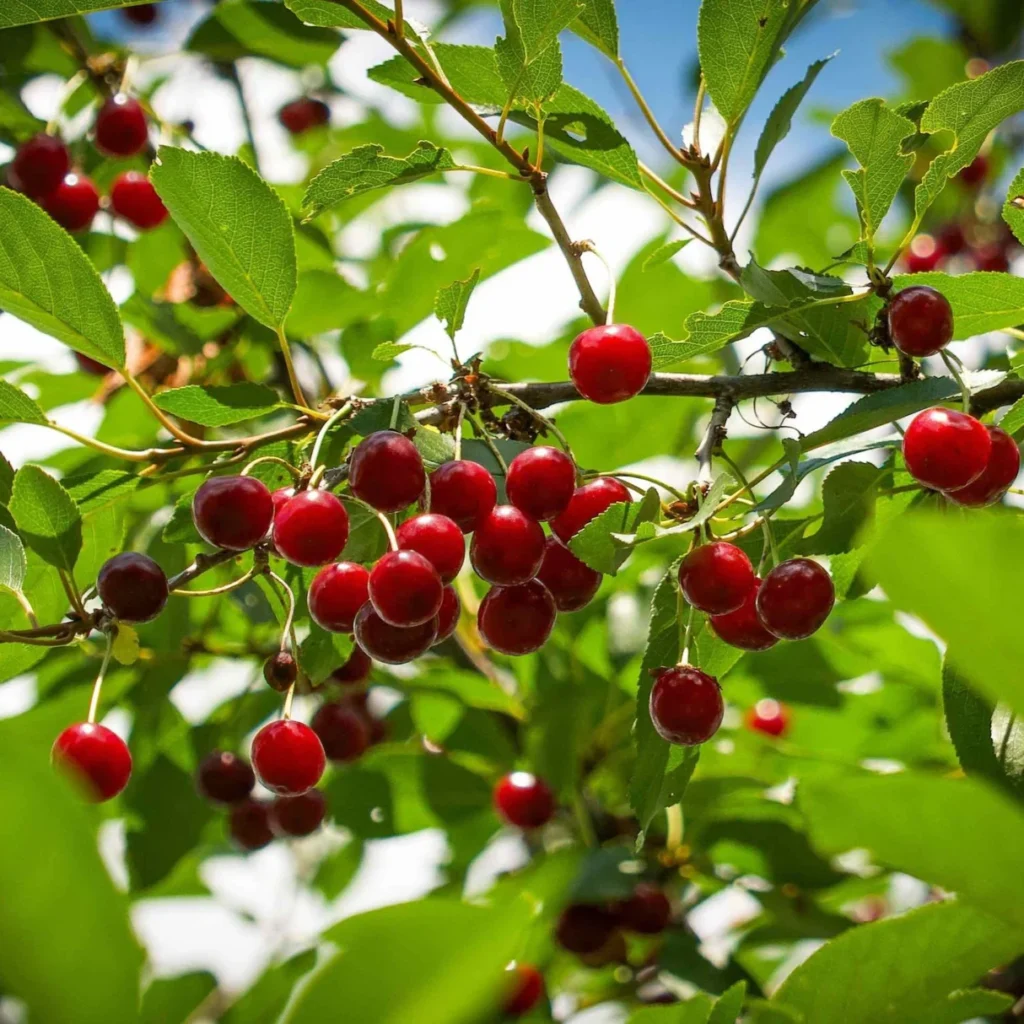
Using clean, sharp tools is crucial to make precise cuts and reduce the risk of disease:
Essential Tools:
- Hand Pruners: For small branches and shoots under ¾ inch in diameter.
- Loppers: For medium branches up to 1½ inches thick.
- Pruning Saw: For larger limbs that cannot be cut with hand tools.
- Disinfectant: Rubbing alcohol or a 10% bleach solution to sterilize tools between cuts, especially if cutting diseased wood.
Safety Gear:
- Gloves to protect hands from cuts and sap.
- Safety glasses when using saws or working overhead.
Step 3: Assessing the Young Tree
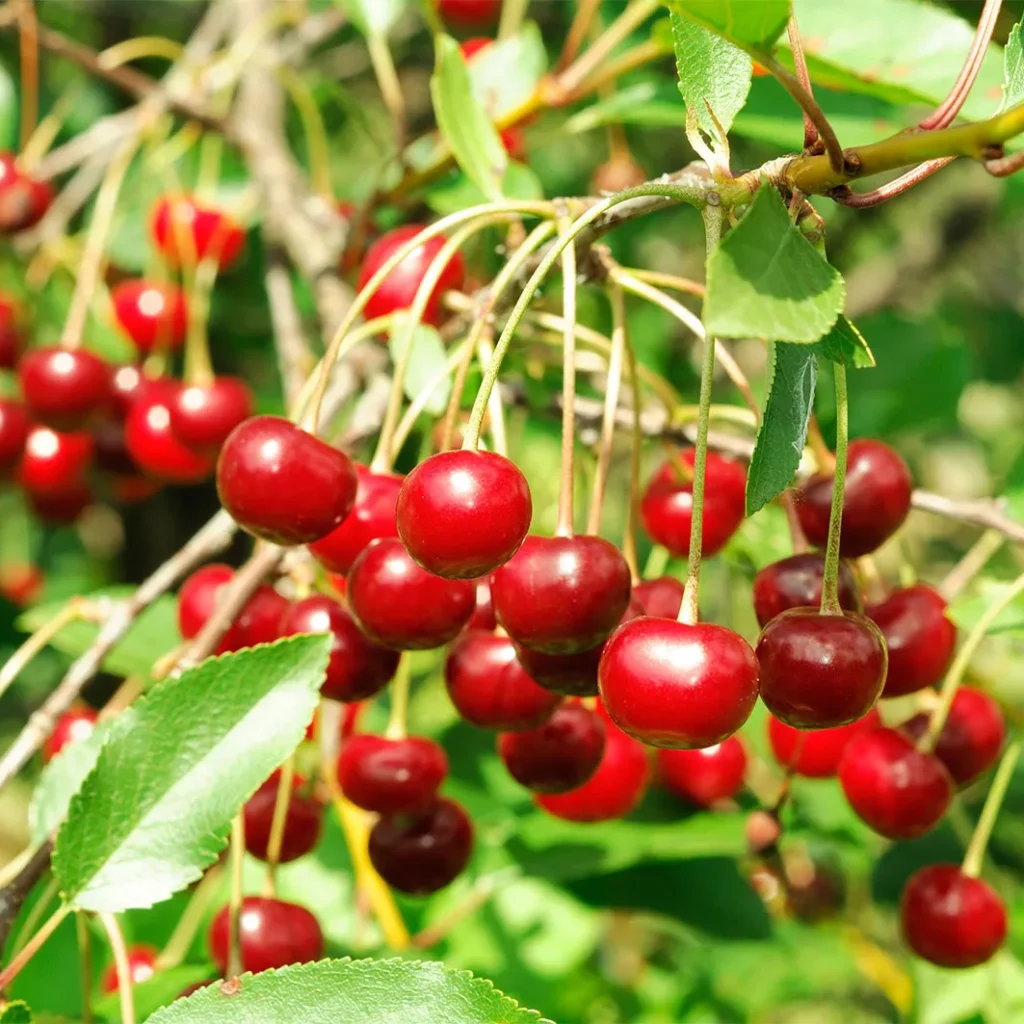
Before making cuts, evaluate your tart cherry tree:
- Identify the Central Leader: Look for the main vertical stem, which will serve as the backbone of the tree.
- Locate Lateral Branches: Identify branches that grow at angles of 45–60° from the central leader. These will become the scaffold branches supporting fruit.
- Check for Damage: Remove any broken, crossing, or diseased branches.
- Measure Height: For newly planted trees, cutting back to encourage branching is normal. Typically, prune the central leader to about 24–36 inches above the soil to stimulate lateral branch growth.
Step 4: Pruning Techniques for Newly Planted Tart Cherry Trees
Establishing the Central Leader
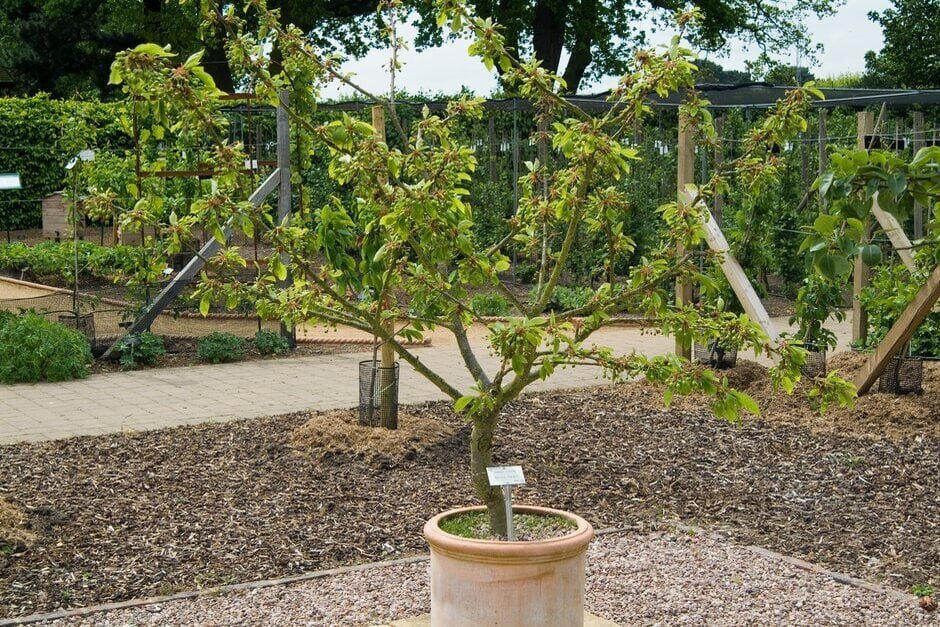
- Select the strongest, straightest vertical stem as the central leader.
- Remove competing stems that may grow alongside it.
- This leader will guide the tree’s height and overall structure for years to come.
Selecting Scaffold Branches
- Choose 3–5 lateral branches spaced evenly around the central leader.
- Branches should ideally form a 45–60° angle with the central leader for strength and fruit-bearing potential.
- Remove inward-growing or crossing branches to prevent overcrowding.
Shortening Growth
- Prune back the lateral branches by about one-third to stimulate side shoots and encourage a fuller, well-balanced canopy.
- Trim excessively long central shoots if needed, but maintain a dominant leader.
Cleaning Up
- Remove small suckers growing from the base of the tree.
- Remove any damaged or weak growth that won’t contribute to the main structure.
Step 5: Caring for Pruning Wounds
Pruning creates open wounds that can attract pests or disease if not managed properly:
- Make clean, angled cuts just above a bud or branch junction to encourage proper healing.
- Avoid leaving stubs, which can become entry points for disease.
- In most cases, wound sealants are unnecessary for young tart cherry trees, as natural healing is usually sufficient.
Step 6: Watering and Fertilization After Pruning
Pruning redirects the tree’s energy toward new growth. Support this by providing proper nutrition and water:
- Watering: Deeply water the tree after pruning, ensuring the root zone is moist. This helps reduce transplant shock and supports root development.
- Fertilization: Use a balanced fertilizer with moderate nitrogen to encourage healthy shoot growth. Avoid excessive nitrogen, which can promote leafy growth at the expense of root development and fruiting.
- Mulching: Apply a 3–4 inch layer of organic mulch around the base (but keep it 4–6 inches away from the trunk) to retain soil moisture, regulate temperature, and suppress weeds.
Step 7: Monitoring Growth
After the first pruning, keep an eye on the young tart cherry tree:
- Watch for vigorous lateral growth from pruned branches, which will form the fruiting canopy.
- Check for any signs of stress, disease, or pest damage.
- Support newly growing branches with stakes or ties if necessary to prevent breakage from wind or rain.
Step 8: Ongoing Pruning in Subsequent Years
First-year pruning is just the beginning. Tart cherry trees require annual pruning to maintain structure, productivity, and health:
- Second Year: Focus on developing the scaffold branches and removing any weak or crowded growth.
- Third Year: Begin light thinning cuts to open the canopy for sunlight and air circulation.
- Mature Trees: Prune to maintain shape, remove dead wood, and improve fruit quality.
Remember, over-pruning can stress the tree, so make moderate, intentional cuts rather than heavy, drastic pruning.
Step 9: Common Mistakes to Avoid
Pruning a young tart cherry tree requires care. Avoid these mistakes:
- Removing the Central Leader: Losing the main vertical stem can result in a weak tree structure.
- Over-Pruning: Excessive cutting reduces leaf area, weakening the tree and slowing root establishment.
- Ignoring Angles: Choosing scaffold branches with narrow angles increases the risk of breakage under fruit weight.
- Pruning During Active Growth: Avoid late spring or summer pruning, as this can stimulate tender growth vulnerable to pests or weather damage.
Step 10: Benefits of Proper First-Year Pruning
- Stronger Tree Structure: The central leader and scaffold branches form a sturdy framework to support fruit loads.
- Enhanced Fruit Production: Properly pruned trees produce more flowers and higher-quality fruit in future years.
- Reduced Disease Risk: Open canopies improve airflow, reducing fungal infections like brown rot or powdery mildew.
- Easier Maintenance: Establishing structure early makes future pruning simpler and less stressful.
Final Thoughts
Pruning a newly planted tart cherry tree is an investment in the tree’s future health and productivity. By carefully selecting the central leader, establishing scaffold branches, and removing weak or crowded growth, you set the stage for a strong, fruit-bearing tree that will provide delicious cherries for years to come.
Key takeaways:
- Prune during late winter or early spring while dormant.
- Use clean, sharp tools to make precise cuts.
- Focus on establishing a central leader and evenly spaced scaffold branches.
- Remove damaged, weak, or crossing branches to prevent structural problems.
- Support young trees with water, fertilizer, and mulch after pruning.
With patience and careful attention, your tart cherry tree will grow into a healthy, productive tree that rewards your efforts with abundant, juicy cherries each season.
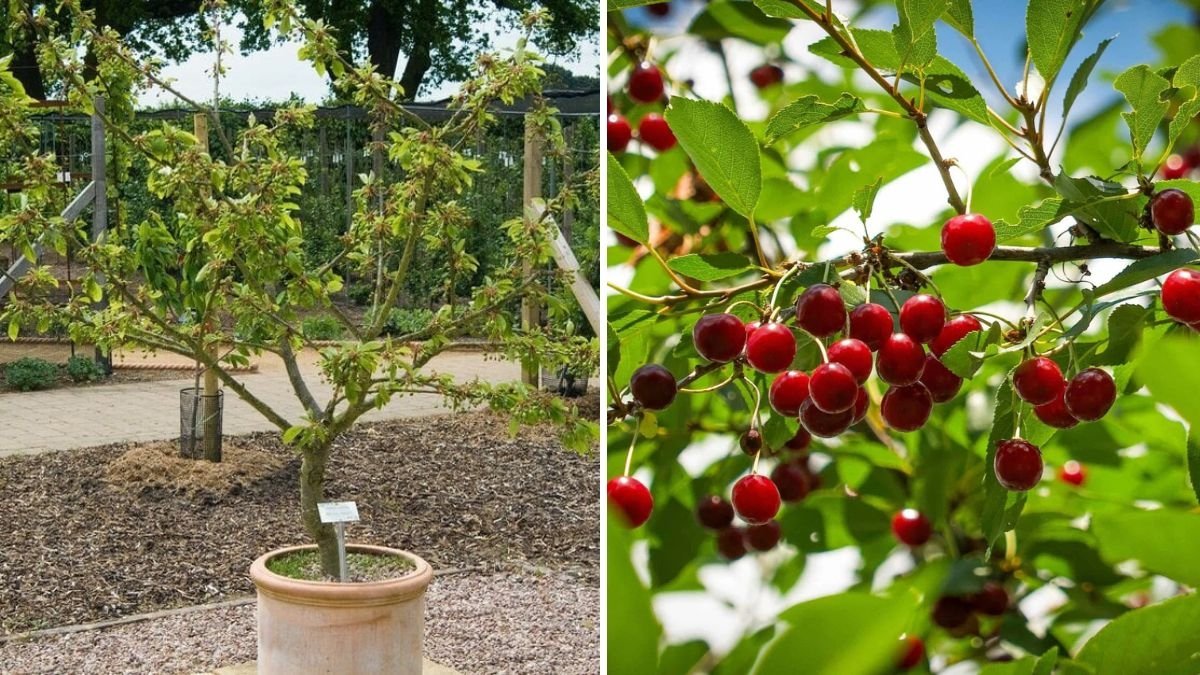
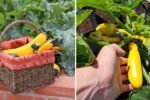
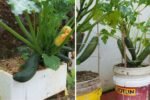
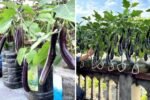
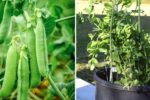
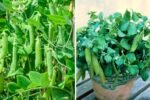
Leave A Comment